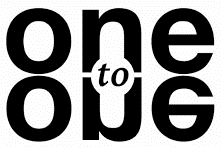
It was 1966. I had just passed my test from the Federal Communications Commission, which allowed me to operate the equipment and be a full-fledged announcer in a local radio station. I had been hired to be an on-air personality. Back then, at least in smaller stations, you ran everything – the turntables where you played music, the cartridge machine for commercials, and all the switches and knobs controlling the microphones and other equipment.
I will never forget my first encounter with all of the equipment in that elaborate studio. It was intimidating. The station engineer taught me how it all worked. Once I got the basics, he turned me over to the program director.
I will never forget the director’s first words.
He walked in the door and said: “Richard, before we get into all the details of good programming, I want to point out one very important thing you must never forget.” He reached out and touched the microphone and continued. “This mike right here is not a mike. It is one person. Not many people. Just one. You are talking to one person. I know you’ll be thinking that when you open this mike and speak, there are thousands of people listening. That may be true. But you are only talking to one person. So don’t use language like ‘many of you out there’ or ‘you all might think’ or ‘some of you.’ No – it is just you and one person. Don’t forget this.”
It was one of the most important and valuable nuggets of communication wisdom I have ever learned. From then on, I applied this truth to all of my communication.
- I would write direct mail copy to just one person.
- I would create a PowerPoint or video for just one person.
- When I would speak publicly, I would address one person.
- When I produced copy for online uses or for a book or brochure, or a radio and TV ad or documentary, it would be directed to one person.
I was in a meeting recently where we were talking about donor offers, and I was making the point that an effective donor offer is one that is personalized to the donor. It is not “one size fits all.” It is tailor-made to the passions and interests of one donor.
To some of the people in the meeting this was a new idea. “Don’t we create general offers that we then take out and give donors to support them?” Half right.
We do create general donor offers, but when it comes down to presenting them to donors, it is important that you adapt them to the donor and her interests and passions.
Remember, everything you do in major gifts – everything – is just one donor at a time. One – not many. You are talking to one, not two or more. Just one.
And everything you say to that donor must fit him like a glove and fill up his heart, mind and spirit with content that is uniquely his. That is honoring. And that is effective.
Richard







Richard,
Great advice,I was fortunate to receive similar advice it is about you ,the person not the masses!
That focus of one is very powerful.
Thank you Richard! One of my bugaboos is receiving mail that says things like “thanks to donors like you.” I find that icky. I’d love to hear your thoughts as well as from others. I see this a lot. I don’t want to be thanked for what other people do or don’t do, I don’t like to be seen as part of a group of people I don’t know. What do you all think of this wording?
I completely agree with your message. In my many years “in the business” I have discovered that my most effective communication and results comes when I have written my message to someone who I consider the most “high touch”. That person who scrutinizes things most closely, or might be quickest to point out the flaws in an otherwise positive situation. In my earliest position, that person had a name… Judy Peterson. I haven’t worked for that college for 25 years… but anytime I start a letter which may be merged and sent to several people… I find myself beginning with, “Dear Judy,”!
Thank you for another relevant and timely post.